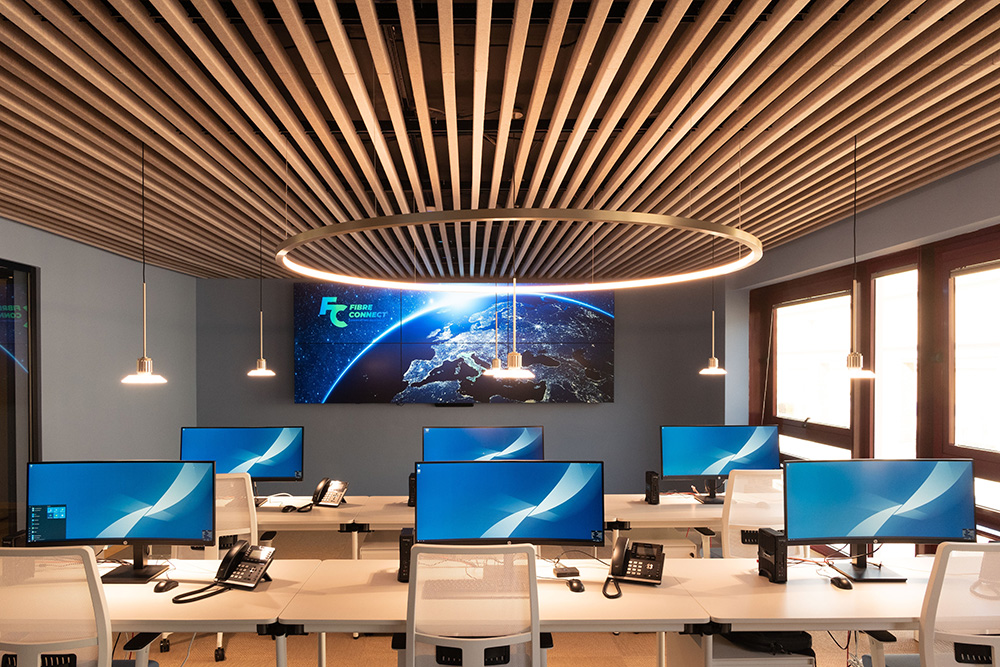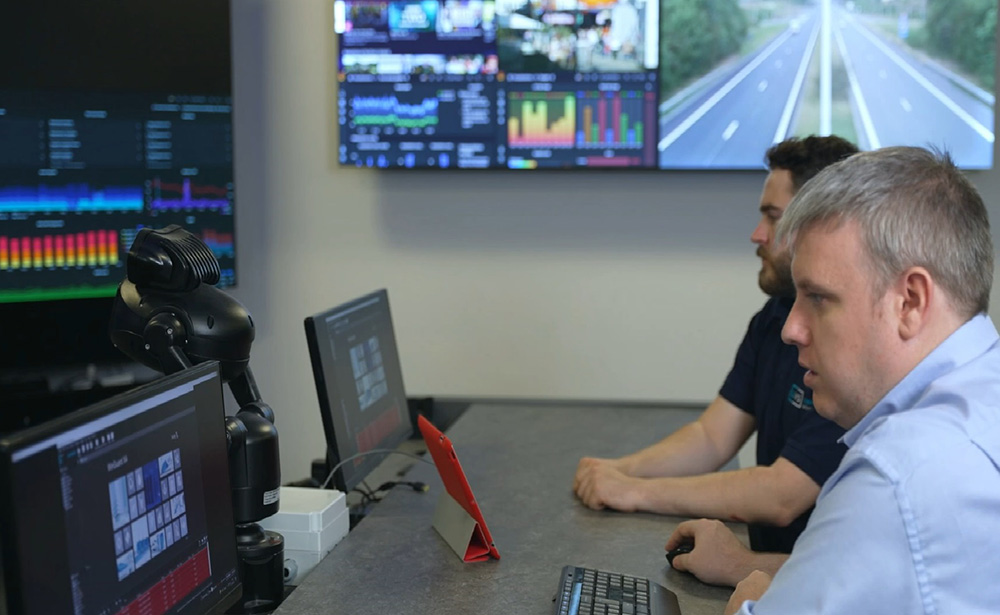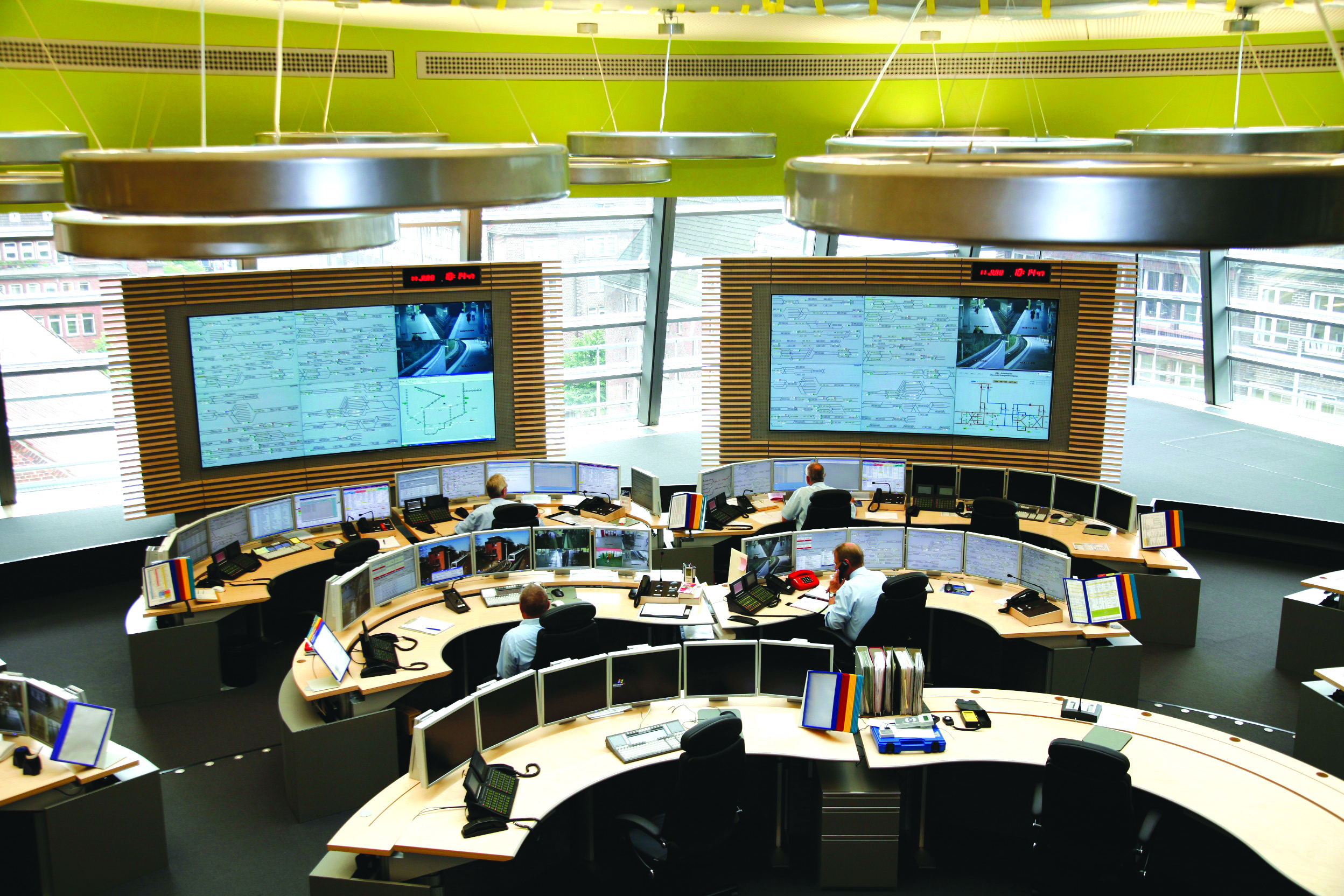
From satnav to Waze to connected vehicles and smart infrastructure, we are now collecting more data than ever before: but how do we make sense of it in the context of the traffic control room? What are the pitfalls? In short, how much data is ‘too much’? “There is a proliferation of data, the number of sources and number of data points per source is ever-increasing,” agrees Piet Vanhuyse, segment marketing director LVX, Barco.
“This abundance of data comes with an expectation for enhanced operational effectiveness and better decision-making. Yet information overload can in certain cases have the opposite effect. When managed data is growing fast it only has value when we really build insights to learn or react faster and become more proactive. As such, data has to be converted to information for the relevant stakeholder in the control room and has to be put in the right context, i.e. do we see a shift in trends?”

Vanhuyse emphasises: “The ‘sense making’ has to happen in the managing and structuring of the data without removing possible future relevant data, meaning being biased towards certain data filters. For example, the power of social media can be strong but can also be very much biased when not validated in the correct manner.”
Automation is the key to avoiding overload, says Steve Murphy, MD of traffic control room video wall specialist Ultimate Visual Solutions (UVS). “With the increase in the amount of data available to control room operators, it is necessary to provide as much automated analysis of the information as possible, to inform control room operators of required actions rather than them being the ones responsible for trying to view all the information and take the necessary decisions and the appropriate actions,” he says.
“For example, in terms of the large amount of CCTV information available to traffic control rooms, additional sensors and video analytics within cameras, or their associated management system, are used to detect slow-moving traffic, traffic travelling through red signals, vehicles travelling in the wrong direction etc. These systems can automatically send alarms.”
Murphy explains that UVS video wall controllers display only the relevant camera feeds and data on the video wall related to these events, thus reducing the control room operators’ workload and decision making.
“They can then concentrate on managing the appropriate actions required, e.g. by alerting the relevant agencies,” he continues. “Operators still have access to a large amount of data which is provided by multiple disparate systems, via multiple servers.”
He adds that the company has seen a “large increase” in demand for high-end KVM-over-IP (keyboard, video & mouse) solutions within traffic control room applications, allowing operators to have 2-4 operator monitors on their desk, with a single keyboard and mouse, with the KVM-over-IP solution providing access to any number of remote servers. “These can be displayed simultaneously on their screens, with multiple application windows in a single screen which are live, simply by moving the mouse into the application window,” Murphy says. “This also allows operators easy access to a large amount of data as required.”

Yet with all this data to manage – and given the importance of keeping traffic moving safely – cybersecurity is a major concern. In a Barco survey of more than 1,000 control room professionals, “keeping up with intrusion, threats and cyber risks” has been identified as a key problem experienced in control rooms today. “Next to increasing threats and risks to manage, also stricter regulations on privacy and data security will have a significant impact,” says Vanhuyse. “It is key for manufacturers to not just pay attention to cybersecurity but consider this as the foundation for any product development.” Barco “meticulously followed” the Security by Design principles, he says.
Cybersecurity is taken very seriously by traffic control room management and their operational staff, Murphy insists. “For any installation of our video wall technology in these applications, there are very strict IT and network protocols that must be adhered to, and compliance proven,” he continues. “For example, clients will have their own software patching and updates regimes that we have to configure. We also have to configure specific windows hardening as recommended by the National Cyber Security Centre as well as specific firewall rules. This is paramount to protect the traffic infrastructure assets and ultimately the road/transport users from any dangers caused from cyber vulnerabilities.”
Finally, since artificial intelligence is currently everywhere in the public consciousness, it is worth considering how AI will disrupt the control room technology market. “AI will support structuring data so that it can make sense for the operators and supervisors in the traffic control room,” says Vanhuyse. “The ‘making sense’ can be AI-supported. It will not take over the human factor as the complexity and interconnection within traffic control rooms is still too high and not all events can be written in an AI logic. Human operators still will need to understand the logic of the AI or at least why certain decisions are taken before it will go in a full automated manner. Some closed transportation loops can work in a full automated way as is happening in ports and airports, based on similar AI application in logistics.”
But, Vanhuyse concludes: “In general traffic, the most unpredictable components are the humans on the streets.”
Why Swarco is considering cloud-only deployments for traffic control software
When Swarco developed its MyCity urban mobility management platform, the company started by interviewing more than 300 cities.
“We engaged with them and we asked them what were the pain points that we need to address with our solution,” explains Michael Schuch, CEO of Swarco. “Before we started the development, we had to decide: are we going for an optimised architecture for a cloud-based solution or is it a solution that should run on-premise? It is common in our industry to have a solution running on a server in their own premises, so the city is managing its own infrastructure. In our opinion, this is not a sustainable and future-oriented way of doing things: solutions running in the cloud will become cheaper, better performing, more secure and better protected.”
The upshot is that Swarco is now considering ceasing deployment of on-premise solutions altogether from 2025 onwards and just going for cloud-based solutions.
“We will continue to listen to our clients’ needs and make best-practice solutions available to them,” Schuch insists. “This will be without sacrificing individualism on important elements for the city, because every city is individual and we know that we have to keep that in mind.”
The cloud-based solution makes sense from the point of view of Swarco’s portfolio. “We can do it today,” Schuch says. “But will the market change fast enough and will the cities be open to be convinced and listen to the pros and cons? That's a different story. Some customers will be more progressive, they will be open for it. And also others will simply say: ‘No, we want to have our own control room, our own server, we want to control everything’. But I hope at some point they will also be open to seeing the benefits in having a future-ready, cloud-based solution that they maybe buy as a service on a monthly basis.”
Safety and also security are major topics of conversation that Swarco is trying to address proactively, via its GoGreen initiative, where it aims – by Intertraffic Amsterdam in April 2024 - to talk to all cities which have signed up to the European Green Deal (which commits them to becoming climate neutral by 2050 and reducing greenhouse gas emissions by 55% compared to 1990 by the year 2030).
“We want to use this opportunity to talk to those cities, find out their concerns, try to give them answers and explain the benefits,” Schuch concludes. “It's dealt with in a very professional and secure way: nobody questions Microsoft if you buy it running on the cloud.”












